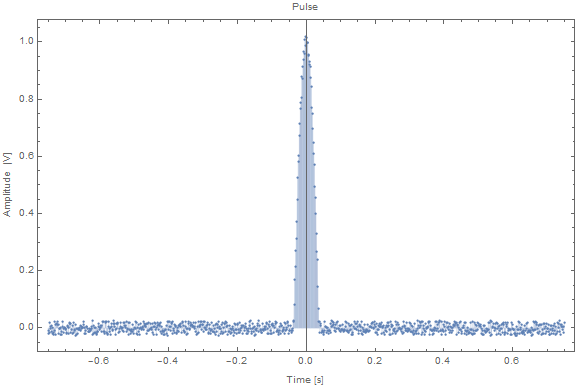Generating my first function
num = 1000; Amp = 0.05; time = 1.5; width = 0.1; T = 1.5; (*declaration of continous function*) With[{w = width, T = time}, pulse[x_] := Cos[2*Pi*x/(w*T)]*(UnitStep[x + w*T/4] - UnitStep[x - w*T/4])] (*funciton sampling*) funX = Table[i, {i, -T/2, T/2, T/(num - 1)}]; fun1 = pulse /@ funX + Amp*RandomReal[{-0.5, 0.5}, num]; ListPlot[Transpose[{funX, fun1}], PlotRange -> All, Filling -> Axis, Frame -> True, FrameLabel -> {"Time [s]", "Amplitude [V]", "Pulse"}, PlotLegends -> {"Pulse"}, ImageSize -> Large] and the second one
With[{\[Delta] = 0.1}, ImpulseResponse[t_] := (1/(2.0*Pi*10.0*Sqrt[1 - \[Delta]*\[Delta]]))* Exp[-\[Delta]*2.0*Pi*10.0*t]* Sin[2.0*Pi*10.0*Sqrt[1 - \[Delta]*\[Delta]]*t]*HeavisideTheta[t]] funTF = ImpulseResponse /@ funX; ListPlot[Transpose[{funX, funTF}], Frame -> True, PlotRange -> All, ImageSize -> Large] Now the plan was to follow this discussion using
konv = ListConvolve[Transpose[{funX, funTF}], Transpose[{funX, fun1}]] (*{{0.152085}}*) but for some reason this doesn't work. The ListConvolve[] only returns one value instead of list. Any ideas why?


